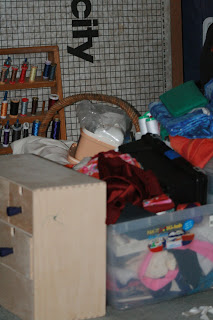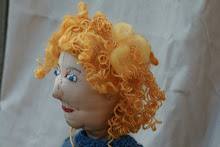
Well, my sewing room is out of action today!
Good news is that I picked up most of the components of a new sewing table-work table on Freecycle. All except one piece of the frame and the legs. And it's a current item at Ikea, so the parts should be available.
More good news: a friend of mine was keen to have the stuff I needed to get rid of out of my sewing room to make room for the new stuff . . . and she could pick it up today. So I spent the morning moving and dismantling stuff. All good so far.
Now for the not so good news, Ikea had everything in stock, except the one piece of frame I need to hold the whole thing together. That one piece is out of stock. Correction! It's not really out of stock, but it's stored somewhere that can't be accessed without a fork lift. Of course the fork lifts come in after the store closes and no, I couldn't pay for the item and wait until closing time to get it. I did ask. So I'll have to go back tomorrow to pick up that one part. Then I can put my sewing room back together again.
Right now my sewing room looks terrible. But I'm looking forward to how it's going to look in a few days.
Good news is that I picked up most of the components of a new sewing table-work table on Freecycle. All except one piece of the frame and the legs. And it's a current item at Ikea, so the parts should be available.
More good news: a friend of mine was keen to have the stuff I needed to get rid of out of my sewing room to make room for the new stuff . . . and she could pick it up today. So I spent the morning moving and dismantling stuff. All good so far.
Now for the not so good news, Ikea had everything in stock, except the one piece of frame I need to hold the whole thing together. That one piece is out of stock. Correction! It's not really out of stock, but it's stored somewhere that can't be accessed without a fork lift. Of course the fork lifts come in after the store closes and no, I couldn't pay for the item and wait until closing time to get it. I did ask. So I'll have to go back tomorrow to pick up that one part. Then I can put my sewing room back together again.
Right now my sewing room looks terrible. But I'm looking forward to how it's going to look in a few days.



